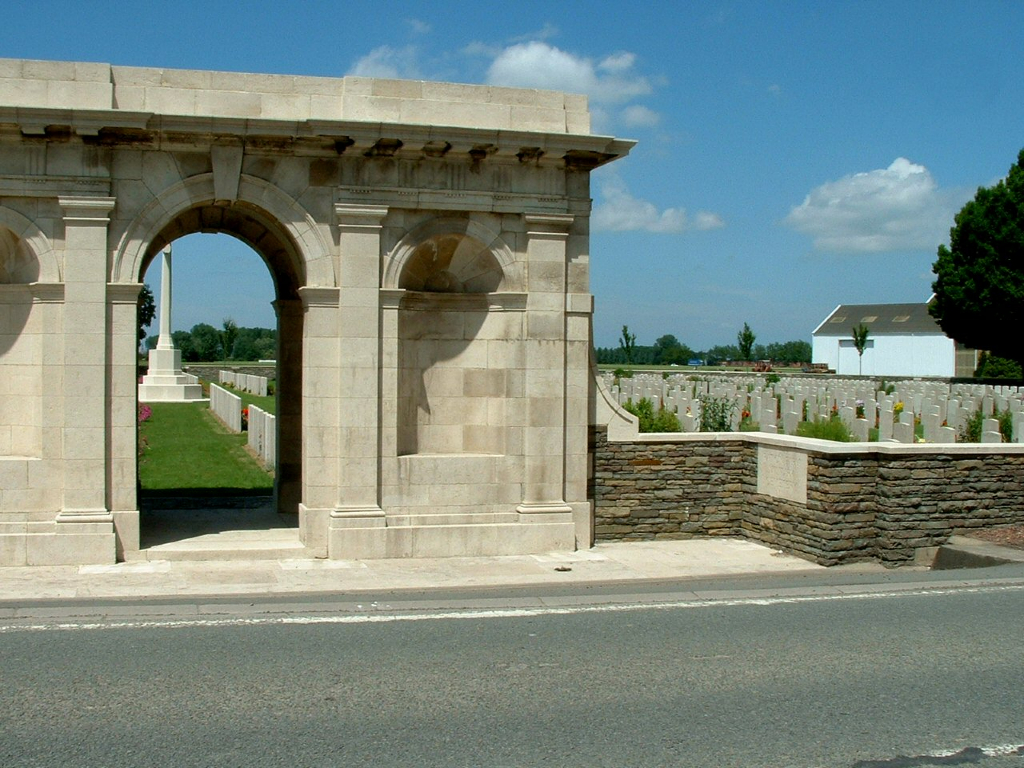Ration Farm Military Cemetery, La Chapelle-D'armentieres
- Country France
- Total identified casualties 643 Find these casualties
- Region Nord
- Identified casualties from First World War
- GPS Coordinates Latitude: 50.65737, Longitude: 2.88829
Location information
Ration Farm Military Cemetery is about 2.5 kms south of the village of La Chapelle-d'Armentieres, on the south-eastern outskirts of Armentieres. Leave La Chapelle-d'Armentieres on the Fleurbaix road and cross over the Motorway bridge. The Cemetery is 500 metres further along on the right hand side of the road.
Visiting information
Wheelchair access to this site is possible, but may be by alternative entrance. For further information regarding wheelchair access, please contact our Enquiries Section on 01628 507200.
History information
For much of the war, Ration Farm was just over 1 kilometre behind the front line at the end of a communication trench. The first cemetery, Ration Farm Old Military Cemetery, was begun in February 1915, close beside the farm buildings. It was used until October 1915 chiefly by units of the 6th Division and at the Armistice it contained 73 graves. In April 1923, these graves were moved into Plot VI of the present cemetery, at the request of the French authorities.
The present cemetery was begun (as Ration Farm New Military Cemetery) in October 1915 and remained in use until October 1918. It was very greatly increased after the Armistice when graves were brought in from isolated sites and small cemeteries on the battlefield, including:-
CHAPEL FARM CEMETERY, FLEURBAIX, which was 2 kms West of Bois Grenier. It contained 11 British graves of 1915 and 1916.
FERME-DU-BIEZ MILITARY CEMETERY, La Chapelle D'Armentieres, which was 2 kms South East of that village. It contained 36 British graves of 1915 and 1918.
For the most part, Plots I to V contain the original burials. Among the isolated graves brought in were many of Australian soldiers who died in the Attack at Fromelles on 19 July 1916.
There are now 1,313 Commonwealth servicemen of the First World War buried or commemorated in the cemetery. 677 of the burials are unidentified, but there are special memorials to six casualties know or believed to be buried among them.
The cemetery was designed by Sir Herbert Baker.


